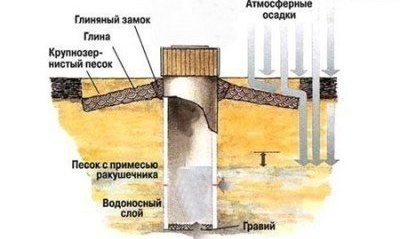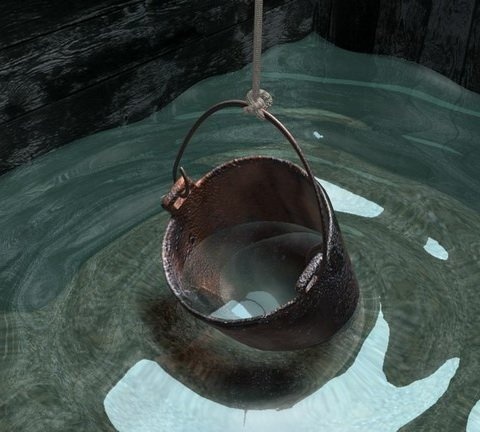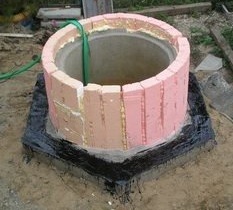Water purification from a well: anti-clouding + disinfection and disinfection methods
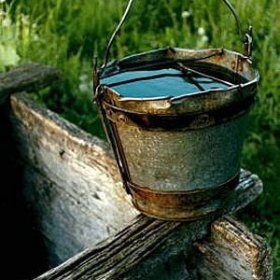
The problem of providing water to private houses located in rural areas, as well as cottages actively used by citizens in the summer, is solved by installing wells or boreholes on the site. For technical purposes, the use of water from these sources in raw form is allowed. The use of well water for drinking and cooking is prohibited without first conducting a laboratory analysis of its composition. According to the data obtained as a result of studying the samples taken, the most effective methods are selected with the help of which water from the well is subsequently cleaned to the standards established by Rospotrebnadzor.
Content
How often do I need to check the quality of well water?
The composition of well water is subject to seasonal changes. Therefore, laboratory analysis of water from the well is recommended to be carried out periodically, which will allow timely detection of changes in its quality.
The service for checking the biochemical composition of the water entering the well is provided on a paid basis by the authorities of Rospotrebnadzor at the request of the owner.
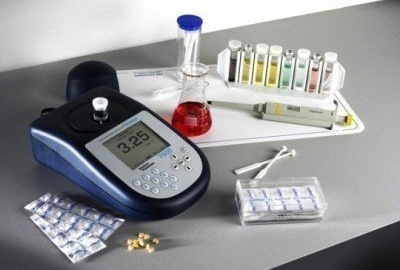
Analysis of water quality in the well must be carried out immediately after its construction, as well as during operation at least once a year
Firms selling equipment for cleaning and disinfecting well water can provide this service to their client for free. At the request of the owner, the verification of water from the well can be performed by laboratory assistants:
- according to the standard analysis scheme;
- investigation of the percentage of one or all of the components that make up the fluid being tested.
For a comprehensive study of water samples taken, laboratory technicians usually need two to three days. The duration of the procedure is specified in the contract concluded by an individual or legal entity with a company licensed to conduct biochemical analysis of drinking water.
Reasons and methods to combat turbidity
After successfully operating the constructed well, many owners are faced with the problem of turbidity. To eliminate the problem, you need to understand why muddy water appears in the well? What contributes to this process? The speed of solving the problem depends on how correctly the cause is identified. The clouding of well water can be due to both natural factors and errors made when caring for the log house or operating pumping equipment. The most common cases of increased turbidity are:
- due to poor sealing of the walls of the well, melt water penetrates in the spring, as well as rain flows in the summer;
- rare use of the well leads to stagnation of water and its turbidity;
- improper location of the pump leads to the fact that in the operating mode, the equipment raises sludge from the bottom, which pollutes the produced water.
If you notice that the muddy water in the well appears after heavy rains or during the spring thaw, then you need to take measures to additionally waterproof the walls of the well. As a rule, a clay castle device saves the situation. The clay castle is made as follows:
- A trench with a width of one meter and a depth of at least half a meter is dug around a wooden log house.
- The entire space of the dug trench is filled with clay, and each layer is carefully rammed.
- A layer of crushed stone is poured on top of the compacted clay, on top of which a cement mortar can be laid. At the same time, the slope is attached to the finish layer, which ensures the outflow of melt and rainwater from the walls of the well.
If the well is built of reinforced concrete rings, then it is necessary to treat their outer surface and joints with coating waterproofing. The removal of surface water from the well is also carried out using a clay castle.
If the reason for the turbidity of the water is associated with a small consumption of this resource, then it is necessary to increase the consumption of well water or install special filters to purify it.
If you notice that the water becomes turbid during the operation of the pump, then reinstall the device in accordance with the instructions of the equipment manufacturer. In some cases, a pump with a different type of liquid suction helps to get rid of the turbidity.
How many stages of treatment should well water go through?
In modern systems for filtering water taken from wells and wells, several stages of its purification are used. After such a multi-stage purification, the water becomes potable.
- At the first stage, mechanical treatment of well water occurs. To do this, use strainers that can trap various impurities that are not soluble in water. Such impurities include silt, sand, rust, clay contaminants, fibers of the sealant made from flax.
- In the second stage, water undergoes electrochemical oxidation. During this process, oxidation of pollutants (iron, manganese, hydrogen sulfide, etc.) dissolved in groundwater occurs. The process involves coaxial cylindrical electrodes installed in a special electrochemical oxidation unit, to which current is supplied under a non-hazardous voltage of only 24 V.
- At the third stage, catalytic clarification is organized, in which substances are removed from the water, due to which the water becomes cloudy. These contaminants are deposited on the filter under the influence of catalysts and then eliminated during washing.
- At the last stage, deep sorption water purification is carried out using special filters containing carbon fibers. Water becomes completely transparent, in addition, the smell and metallic taste disappear.
It is important to note that when choosing filtration equipment they are guided by the results of water analysis.
Disinfection Methods
Before disinfecting water in a well, it is necessary to pump out all the water and clean the bottom and walls of settled muddy deposits.
After that, the walls of the log house are treated with disinfectant reagents that have official approval for use in Russia.Usually, chlorine-containing preparations are chosen for disinfection, which include bleach and calcium hypochlorite salts (DTSGK).
After filling the well, a solution of bleach diluted in accordance with the recommendations of the manufacturer of the disinfectant is added to the water. After that, the water in the well is mixed well with a pole or bucket, which is raised with water 30 cm from the surface of the mirror, and then sharply released.
It is advisable to disinfect the drinking source with the help of Rospotrebnadzor employees or medical personnel who know how to disinfect the water in the well correctly and what means can be used for this. Specialists will dilute the reagents in accordance with current instructions.
The use of shungite for natural water purification
Yellow water in the well indicates that the drainage layer of sand and gravel that is poured to the bottom of the source even when it is not working does not function. Silting of crushed stone reduces its drainage ability, therefore it is necessary to periodically change crushed stone and sand.
It is also recommended that a layer of shungite, a natural mineral mined in Karelia, be poured over the gravel layer. It is scientifically proven that shungite is able to purify water from a number of organic substances and make it healthy.
Everyone knows that poor-quality drinking water can provoke intestinal diseases. To be sure of the purity of well water, conduct a timely analysis of it and measures for disinfection of the well. For these works, it is better to involve specialized companies that are licensed and know how to purify the water in the well in accordance with the standards established by the sanitary and epidemiological surveillance authorities.
